Protein for the Vegan Athlete
An Accredited Sports Dietitian's tips for optimising protein as a vegan athlete

Article by Leah Higl. Leah is an Accredited Sports Dietitian who works with a range of athletes from strength sports, to endurance and combat sports at Plant Nutrition and Wellness. She loves to show her clients how you can be just as strong eating only plants. Leah is also a competitive powerlifter.
Vegan diets are commonly criticised for not being conducive to athletic performance and muscle building.
Whilst a few extra steps need to be taken in optimizing a plant-based diet as an athlete, you can absolutely gain muscle and perform at a high level without eating animal products.
Over the years I have worked with vegan athletes from a variety of sporting backgrounds including powerlifting, crossfit, Ironman and combat athletes. Not only have these athletes been able to live on a vegan diet, but also thrive on one!
However, one of the most common mistakes vegan athletes make is not getting enough high quality protein in their diet.
So in this article, we are going to go over the top 3 tips to optimise protein intake on a vegan diet.
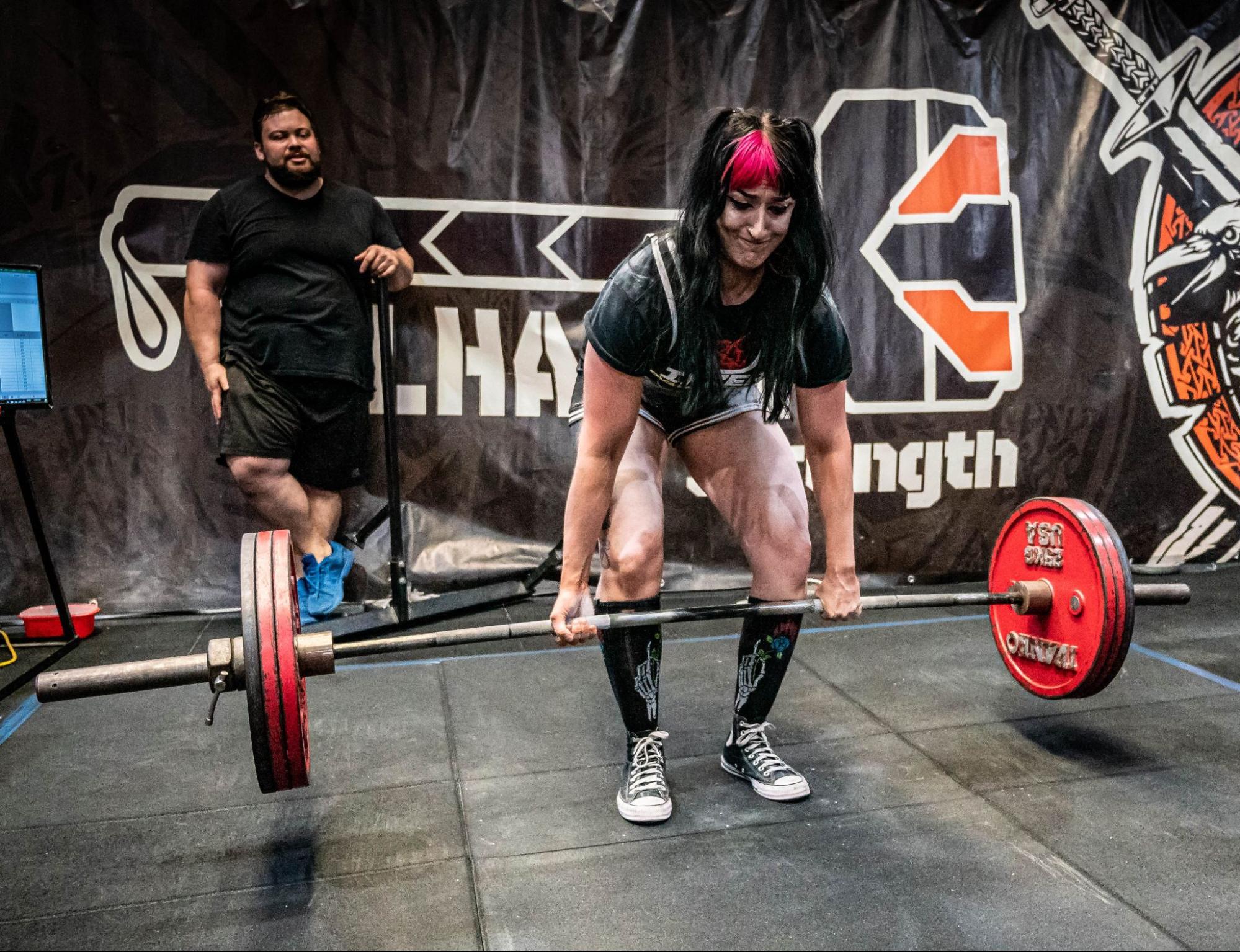
What Is Protein?
Protein is required by the body to grow and repair cells and is the most important macronutrient when it comes to muscle building and recovery.
Protein is made of building blocks called amino acids. There are 20 amino acids that combine together in different ways to create different types of proteins. Nine of the 20 amino acids are considered essential, meaning that our bodies cannot produce them and we must get them through our diet.
Good sources of plant-based protein include tofu, tempeh, edamame, textured vegetable protein, seitan, legumes, nuts, seeds and some pea protein based mock meats.
How Much Protein Do You Need?
General recommendations for nonathletic populations are around 0.8g of protein per kg body weight. But recommendations for athletes vary between 1.4g/kg and even up to 3g/kg body weight.
Not only that but evidence shows that vegans require even more protein than their non-vegan counterparts in order to have the same recovery and anabolic (muscle building) effect.
Protein requirements for vegans are often 10-20% more than non-vegans. This is due to the differences in protein quality of plant-based proteins versus animal-sourced proteins.
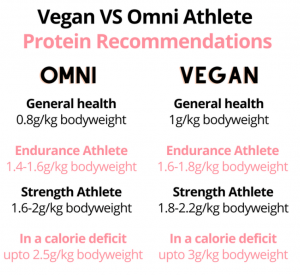
Note that these recommendations are based on relatively lean people. If you are holding extra body fat, you may be able to aim lower than this.
For example, there is a significant difference in the protein requirements for a 100kg football player with 12% body fat and a 100kg person who is 30% body fat and just starting their strength training journey.
This is because the more muscle mass you have, the more protein you require to maintain it.
So although those two people are the same weight, the football player with a greater percentage of lean mass would have higher protein requirements.
Tip 1: Split Protein Intake Evenly Throughout The Day
To further optimise muscle protein synthesis, you will also want to split this protein intake into 4-6 doses throughout the day.
The threshold for optimising muscle protein synthesis is around 0.4-0.6g per kilo body weight. This will keep muscle protein synthesis optimised for around 3 hours.
Therefore, you should be having 0.4-0.6g per kg body weight of protein every 3 or so hours throughout the day. You can absolutely have more than this in one sitting and it will still be absorbed but you won’t be further optimizing muscle protein synthesis.
For example, take a 55kg female Olympic weightlifter aiming for 100g of protein per day. Below is a good representation of a suboptimal protein distribution and an optimal one.
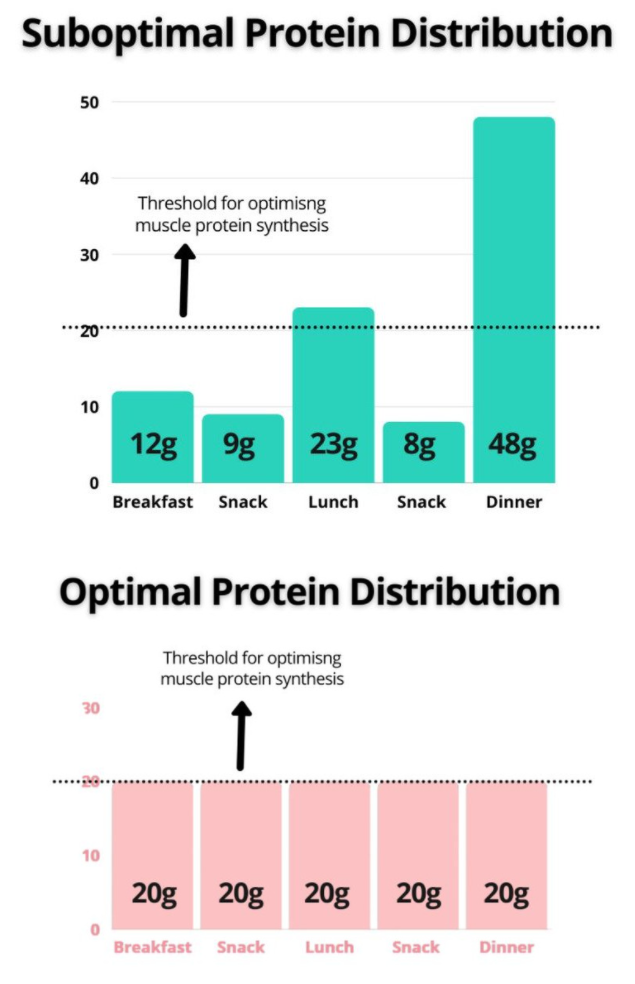
Tip 2: Focus On High Quality Protein Sources
In addition to having a high enough protein intake and spreading that intake evenly over the course of the day, it is also important to have a focus on high quality protein sources.
As we discussed previously, the protein quality of plant foods is typically lower than animal based foods. This is due to often having a lower protein digestibility and a limited amount of certain essential amino acids.
Increasing your protein intake by 10-20% compared to non-vegan recommendations alleviates a good majority of this problem. Although to optimise recovery, it is best to prioritise high quality plant-based protein and use the method of protein combining.
Plant-based proteins are often described as “not complete proteins” due to there often being a limited amount of particular essential amino acids.
Soy foods such as tofu, tempeh, soy milk and textured vegetable protein are arguably the best plant protein because they are actually considered a complete protein.
But other plant sources such as wheat protein, although abundant in the amino acids methionine and tryptophan, are lacking in lysine. Whilst legumes are lacking in methionine and tryptophan but abundant in lysine.
The limiting amino acid problem can be solved through protein combining. This means combining two protein sources that complement each other’s limiting amino acids.
Using our previous examples, baked beans (a legume) on toast (grain food) would together provide a much better amino acid profile than one of those foods by themselves.
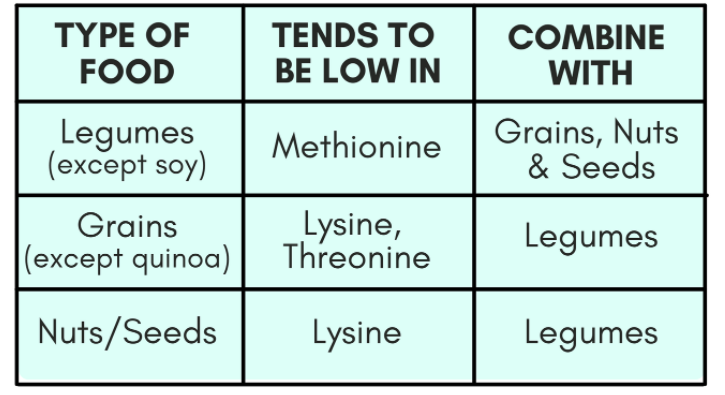
In general, this protein complementation can occur across the day by having a wide range of protein foods. However, when looking to optimize muscle protein synthesis, it is likely to be beneficial to complement proteins at each main meal.
Some more examples of protein combining could include:
- Seitan (grain) & lentil pasta (legume)
- Pea protein chunks (legume) & high protein wheat pasta (grain)
- Soy yogurt (complete) & almonds (nut)
- Noodle stir fry (grain) & edamame (complete)
Tip 3: Prioritise Efficient Sources Of Protein
To reach high protein requirements each day without overshooting your calorie goal, you will need to focus on efficient sources of protein.
Efficient in that they provide a good amount of protein per calorie.
A general rule of thumb is that efficient sources of protein have at least 12g of protein per 100 calories. This is a bit of an arbitrary line to draw but it can make identifying good versus poor sources of protein a lot more simple.
Examples of efficient protein sources include tofu, textured vegetable protein, seitan and protein powder. The fewer calories you have to meet your large protein requirements the more emphasis you will have to put on those very efficient protein sources.
Legumes such as beans, lentils and chickpeas can also be good sources of protein to include in your diet. But it could be difficult to reach your target using legumes as a predominant source of protein. Legumes are quite starchy and have a fairly high carbohydrate content as well as protein.
It is a similar case for nuts and seeds. Whilst they can contribute to your daily protein intake, due to their high fat content, they are not very efficient sources of protein.
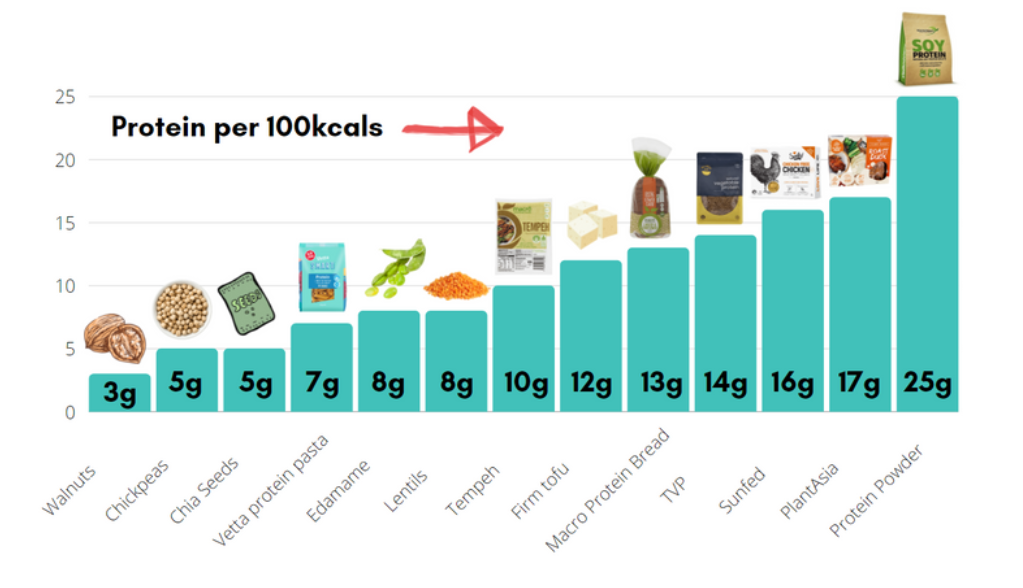
Just be mindful that you also don’t want to make up a significant portion of your protein intake with protein powder.
Protein powder is often lacking in micronutrients including iron and zinc. So if you are having too much protein powder, you will likely miss out on a few key nutrients.
It is recommended that those under 80kgs have no more than 40g of protein powder per day and those over 80 kgs have no more than 60g of protein powder per day.
Key Take-Aways
Meeting your protein requirements as a vegan athlete does take a little bit of know-how but it is absolutely doable.
Once you know your way around a block of tofu and some TVP, you will be meeting your requirements in no time.
Just ensure that you are focusing on high quality, efficient sources of protein and that you are spreading it evenly across your day.